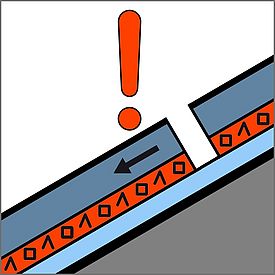
What?
Characteristics
The avalanche problem is related to the presence of one or more persistent weak layers in the old snowpack. These weak layers typically include faceted crystals, depth hoar or surface hoar crystals.
Avalanche type and trigger
- Dry-snow slab avalanches
- Mostly human triggered avalanches; natural avalanches are rare, mainly in combination with other avalanche problems.
- Remote triggering is possible and crack propagation over long distances is common.
Where?
Spatial distribution
The avalanche problem can be widespread or quite isolated. It can exist in all aspects, but is more frequently found on shady, wind sheltered slopes.
Position of the weak layer in the snowpack
In the old snowpack, often deeply buried. However, when deeply buried triggering is less likely, but avalanches may become large.
Why?
Release characteristics
Avalanche release occurs when loading exceeds the strength of the weak layer.
When?
Duration
Weak layers can persist for weeks to months; possibly even during most of the winter season.
How to manage?
Identification of the problem in the field
Persistent weak layers are very challenging to recognize. Signs of instability such as whumpfs are typical, but not necessarily present. Stability tests can be helpful to detect persistent weak layers. Knowledge of snowpack evolution is required and reference to the avalanche report is important.
Travel advice
Travel conservatively and avoid terrain features (e.g. large steep slopes) where consequences of being caught are large (e.g. deep burial). Consider the history of weather and snow cover processes in the area. Be extra cautious in areas with a thin snowpack and at the transition from thin to deep snowpack. The release of avalanches in persistent weak layers are a significant cause of recreational avalanche fatalities.